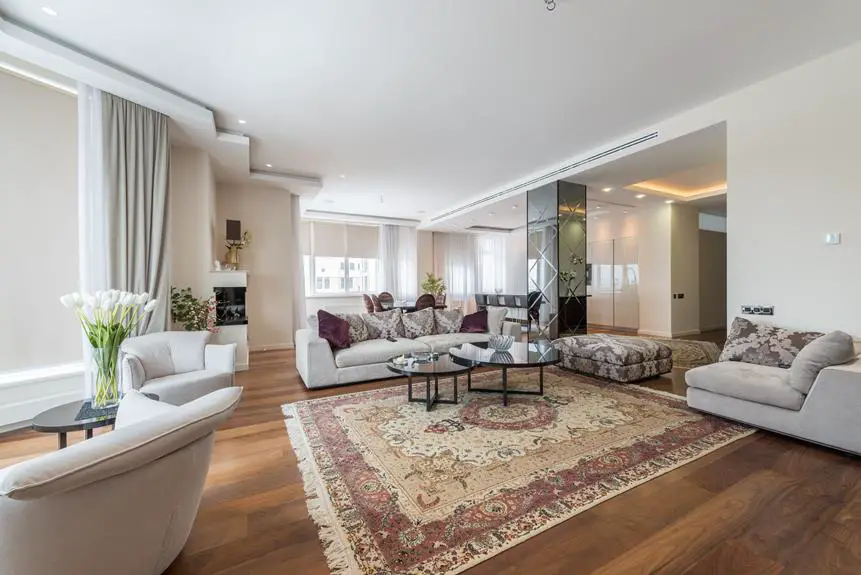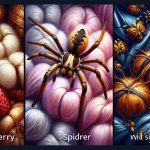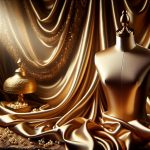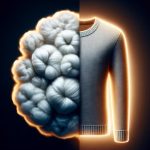So, you're curious about the most expensive fabric out there. Well, let's delve into the world of luxury textiles.
Cashmere, silk, and vicuña are just a few contenders in this exclusive realm. When it comes to mastering opulence, rare and exotic fabrics hold significant sway in the high fashion domain. From historical significance to the intricate creation process, every aspect contributes to the allure of these luxurious materials.
But which fabric takes the crown as the most expensive? Get ready to uncover the ultimate winner in the realm of opulent textiles.
Key Takeaways
- Production costs, market demand, material scarcity, and understanding these factors drive fabric prices.
- Silk and cashmere are top luxury fabrics known for their rareness and exclusivity, which contribute to their high price tags.
- Rare and exotic textiles like vicuña wool, guanaco wool, qiviut, and spider silk command high prices due to their scarcity and labor-intensive processes.
- Rare and exotic textiles in high fashion, such as luxe silk, ethical fur alternatives, alpaca wool, and bamboo silk, showcase opulence and ethical consciousness.
The Factors Driving Fabric Prices
The factors driving fabric prices depend on various elements such as production costs, demand, and material scarcity.
Production costs play a pivotal role in determining the price of fabric. Factors such as labor, energy, and raw materials can significantly impact the final cost of the fabric.
Moreover, market demand also plays a crucial role in influencing fabric prices. When there's high demand for a particular type of fabric, its price tends to rise due to the principles of supply and demand. Conversely, if the demand for a certain fabric decreases, its price may also decrease.
Additionally, material scarcity can drive fabric prices up. When certain materials become scarce or difficult to source, the cost of producing fabric from those materials increases, leading to higher prices for consumers.
Understanding these factors can provide insight into the fluctuations of fabric prices and enable informed decision-making when it comes to purchasing or investing in fabrics.
The Top Contenders in Luxury Fabrics
Let's compare the top contenders in luxury fabrics – silk and cashmere.
Both are prized for their rareness and exclusivity, driving up their prices in the market.
Understanding the unique qualities of these fabrics can help you appreciate why they're considered the epitome of luxury.
Silk Vs. Cashmere
When considering luxury fabrics, you'll undoubtedly come across the perennial debate of silk versus cashmere. Both are renowned for their luxurious feel and high price tags, but they differ in many ways. Here's a comparison to help you understand the distinction:
- Silk Production
- Derived from silkworms
- Labor-intensive process
- Known for its lustrous appearance
- Cashmere Sourcing
- Obtained from the soft undercoat of cashmere goats
- Requires combing or shearing
- Prized for its exceptional softness and warmth
These intricacies highlight the unique aspects of each fabric, allowing you to make an informed decision when seeking the ultimate in luxury.
Rareness and Exclusivity
Consider rareness and exclusivity when determining the most expensive luxury fabric.
Rare textiles like vicuña wool and guanaco wool are highly sought after for their exclusivity. Vicuña wool comes from the wild vicuña, a rare Andean camelid, while guanaco wool comes from the similarly rare guanaco.
These exclusive materials aren't only difficult to obtain but also require meticulous care and attention to produce high-quality fabrics.
On the other hand, exclusive materials like qiviut, obtained from the undercoat of muskoxen, and spider silk, harvested from golden orb-weaver spiders, are prized for their rarity and the intricate processes involved in their production.
The scarcity and labor-intensive nature of these rare and exclusive textiles contribute significantly to their high prices in the luxury fabric market.
Rare and Exotic Textiles in High Fashion
You're about to discover the world of luxe silk origins, ethical fur alternatives, and couture's sustainable allure. These rare and exotic textiles are making a big impact in high fashion, offering a blend of opulence and ethical consciousness.
Get ready to explore the fascinating intersection of luxury and sustainability in the world of high-end fabrics.
Luxe Silk Origins
The most expensive fabric in the world, silk, originates from rare and exotic textiles that are highly sought after in high fashion. Luxurious origins of silk production include:
- Mulberry Silk: Extracted from silkworms fed only mulberry leaves, this type of silk is known for its fine quality and smooth texture.
- Spider Silk: Considered one of the rarest and most exquisite silks, it's produced by golden orb-weaver spiders and is incredibly strong and lustrous.
- Muga Silk: Originating from Assam, India, this golden-hued silk is produced by the Assam silk moth and is cherished for its natural sheen and durability.
These rare and exotic silks are revered in the world of high fashion for their unparalleled beauty and opulence, making them highly coveted by discerning connoisseurs.
Ethical Fur Alternatives
If you're seeking ethical fur alternatives in high fashion, you'll find that rare and exotic textiles often offer a luxurious and sustainable option.
Eco-friendly alternatives, such as innovative plant-based fibers like Tencel and Modal, provide animal-friendly options without compromising on style or quality. These cruelty-free materials offer a guilt-free alternative to traditional fur, catering to the ethical and environmentally conscious consumer.
Sustainable innovation has also led to the development of faux fur made from recycled materials, further reducing the impact on wildlife.
Additionally, exotic textiles like alpaca wool and bamboo silk offer luxurious textures while promoting ethical and sustainable practices in the fashion industry.
Embracing these eco-friendly and animal-friendly alternatives not only showcases a commitment to ethical fashion but also contributes to a more sustainable future.
Couture's Sustainable Allure
Exploring sustainable allure through integrating rare and exotic textiles in high fashion provides a unique opportunity to showcase ethical and environmentally conscious couture. Embracing sustainable fashion involves utilizing eco-friendly materials and incorporating them into exquisite, high-end designs. By featuring rare and exotic textiles in couture, designers can demonstrate their commitment to preserving the environment and supporting ethical practices in the fashion industry. This approach not only elevates the exclusivity and prestige of couture but also promotes a more sustainable and responsible approach to fashion.
- Incorporating Organic Fabrics: Utilizing organic cotton, hemp, or bamboo fibers to create luxurious and sustainable couture pieces.
- Upcycling Vintage Textiles: Repurposing antique or rare fabrics to craft unique and environmentally friendly high fashion garments.
- Utilizing Eco-friendly Dyes and Treatments: Employing natural dyes and low-impact textile treatments to minimize environmental impact while creating exquisite couture.
Historical Significance of Expensive Fabrics
When researching the historical significance of expensive fabrics, you'll find that silk, for example, has been prized for centuries for its luxurious feel and elegant appearance. The cultural influence of silk is evident in its role as a status symbol in ancient China and its association with luxury and prestige in many other cultures. Another fabric with significant historical importance is velvet, which was once reserved for royalty and nobility due to its intricate production process and opulent texture. Furthermore, brocade, known for its richly decorative designs, has been used in various cultures to create luxurious garments and furnishings, reflecting the historical significance of opulent fabrics in art and fashion.
| Fabric | Historical Significance | Cultural Influence |
|---|---|---|
| Silk | Prized for centuries for its luxurious feel and elegant appearance | Status symbol in ancient China and association with luxury and prestige in many cultures |
| Velvet | Reserved for royalty and nobility due to its intricate production process and opulent texture | Associated with luxury and worn by the elite in various cultures |
| Brocade | Known for its richly decorative designs | Used in various cultures to create luxurious garments and furnishings, reflecting opulence in art and fashion |
The Process of Creating Opulent Textiles
Creating opulent textiles requires meticulous craftsmanship and the use of the finest raw materials to achieve unparalleled luxury. Textile craftsmanship is the cornerstone of opulent fabric creation, blending traditional weaving techniques with modern innovations to produce exceptional textiles. The process involves skilled artisans who devote hours to perfecting their craft, ensuring every detail meets the highest standards of quality.
- Fine Material Selection: Opulent textiles begin with the careful selection of the finest raw materials, such as silk, cashmere, and rare fibers sourced from around the globe.
- Intricate Weaving Methods: Traditional weaving techniques are employed to create intricate patterns and textures that define opulent fabrics, adding depth and richness to the material.
- Exquisite Fabric Embellishments: Luxurious textiles often feature elaborate embellishments, such as hand-embroidery, beading, or intricate lacework, elevating the fabric to a level of unparalleled opulence.
In the luxury textile markets, the demand for these exquisite creations is driven by the dedication to preserving time-honored techniques and the pursuit of unparalleled luxury. The result is a testament to the artistry and skill that goes into every opulent textile, making them highly sought after by connoisseurs of fine craftsmanship.
The Ultimate Winner: Most Expensive Fabric
Couture silk, known for its unparalleled sheen and delicate drape, reigns as the most expensive fabric in the world. The luxury textiles market continually evolves, and fabric pricing trends often reflect the exclusivity and opulence associated with high-end fabric trends. Luxury fabric market research and fabric market analysis consistently point to couture silk as the ultimate winner in the expensive fabric category. Its production involves intricate processes and meticulous craftsmanship, contributing to its status as the most expensive fabric globally.
In the realm of luxury fashion materials, expensive fabric trends showcase the allure of opulent fabric trends. The exclusive textile industry embraces couture silk as the epitome of luxury, driving its demand and further solidifying its position as the most expensive fabric. Understanding the dynamics of luxury fabric market trends allows for a deeper appreciation of the craftsmanship and artistry behind couture silk.
As you delve into the world of high-end fabric trends, the significance of couture silk as the most expensive fabric becomes evident, underscoring its unmatched desirability and prestige.
Frequently Asked Questions
What Are Some Affordable Alternatives to the Most Expensive Fabrics?
Looking for affordable alternatives to expensive fabrics? Consider sustainable options like organic cotton, linen, and Tencel. These materials offer quality and durability without breaking the bank. Explore these options to find the perfect fabric for your project.
How Do Fashion Designers and Manufacturers Justify the High Prices of Luxury Fabrics?
When justifying high prices for luxury fabrics, fashion designers and manufacturers employ effective marketing strategies to influence consumer perception. They also emphasize sustainability and minimize environmental impact to appeal to conscious consumers.
Are There Any Ethical Concerns Surrounding the Production of the Most Expensive Fabrics?
When it comes to the most expensive fabrics, ethical concerns often arise due to environmental impact and labor practices. However, the fashion industry is exploring sustainable alternatives to address these issues and promote ethical production.
Can the Average Consumer Distinguish Between the Most Expensive Fabrics and Lower-Priced Options?
When it comes to consumer perception, distinguishing between luxury and affordability can be tricky. However, with some knowledge and attention to detail, you can differentiate between the most expensive fabrics and lower-priced options.
What Role Does Cultural Significance Play in the Pricing of Rare and Exotic Textiles in High Fashion?
Cultural significance significantly impacts the pricing of rare and exotic textiles in luxury fashion. Factors like historical value, craftsmanship, and exclusivity drive up prices. Understanding these influences can help you appreciate the value behind high fashion fabrics.
- Why Open-Weave Scrim Is the Secret to Stunning Event and Canopy Designs - June 26, 2025
- Creating Large-Scale Art Installations With Scrim Fabric - June 26, 2025
- Scrim Fabric in Upholstery: Understanding Its Use as a Backing Material - June 26, 2025





